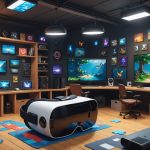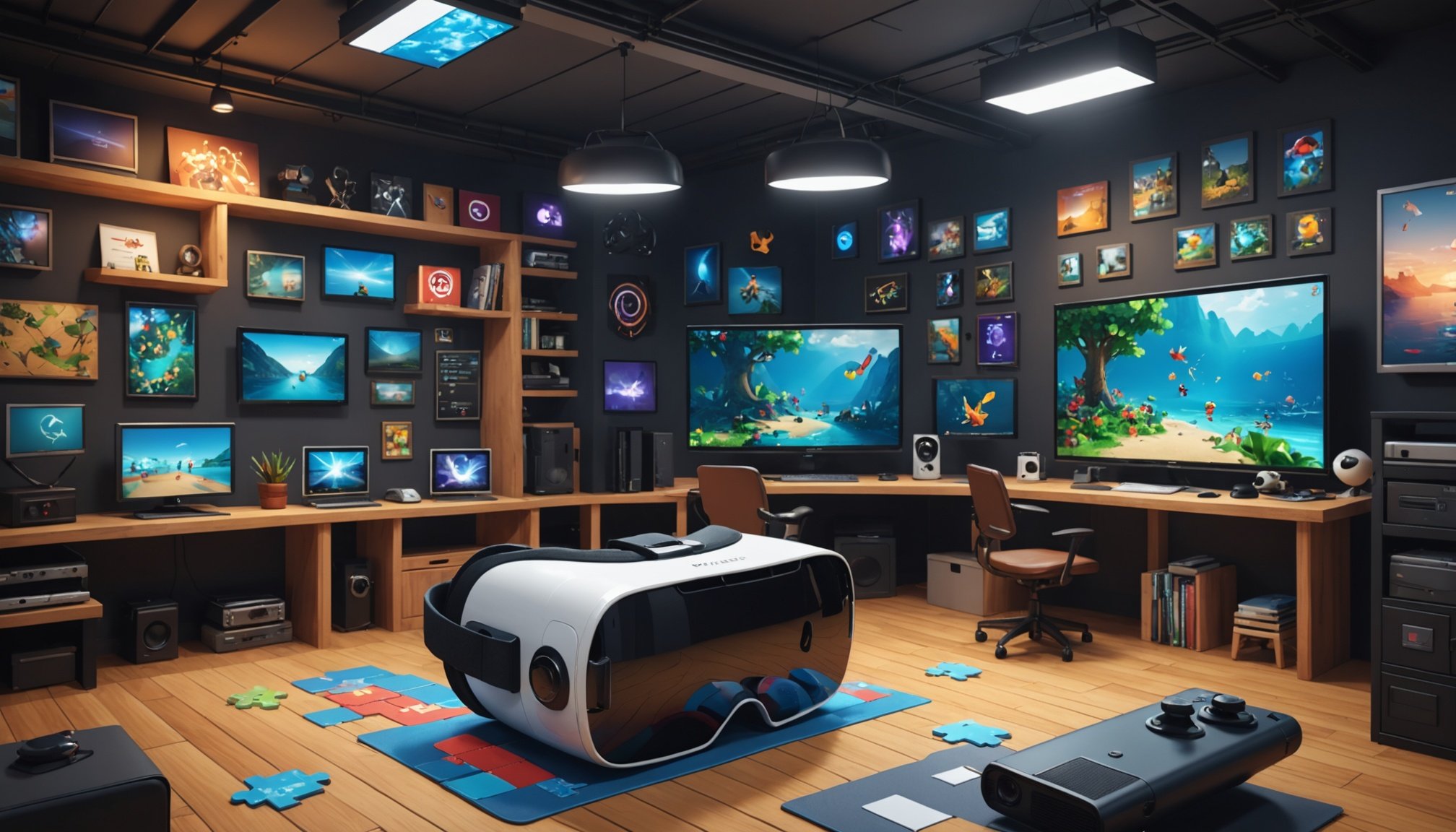Design Principles for VR Interfaces
In the realm of virtual reality design standards, recognizing the significance of spatial awareness and orientation is paramount. Effective VR interfaces must accommodate the user’s ability to navigate and understand their surroundings. This entails designing environments where users can easily orient themselves, minimizing disorientation and enhancing overall experience.
Usability principles are equally crucial in virtual reality. Rather than being an afterthought, these principles should be integral from the outset. User-friendly menus and interaction methods must be clear and intuitive to prevent frustration. This ensures a seamless transition from the real world, allowing users to focus on the immersive environment without being hampered by cumbersome controls.
In parallel : Revolutionizing narrative games: the role of ai in crafting personalized storylines and future prospects
A pivotal aspect of VR is designing for natural user interactions. Users expect responsive and instinctive responses from the virtual domain, mirroring real-world interactions. Imagine reaching out to grab an object and having it respond naturally. This level of responsiveness can greatly enhance the immersive experience.
To cater to these needs:
Also to discover : Achieving perfect character balance in fighting games: essential techniques for game developers
- Ensure spatial cues are noticeable.
- Design interfaces that leverage familiarity.
- Facilitate intuitive actions through gesture-based inputs.
By emphasizing these design principles, VR interfaces can become more accessible and engaging, offering users an enhanced and immersive virtual experience.
Unique Features of VR Interfaces
Virtual reality (VR) interfaces boast a range of unique features that set them apart from traditional interfaces. A standout characteristic is their use of 3D space in interface layout. This allows users to interact with virtual environments in a way that mimics real-world interactions, enhancing immersion and providing a more intuitive user experience. The ability to manipulate objects in three dimensions is a defining immersive interface characteristic that offers a more natural and engaging way to interact with digital content.
Another pivotal feature is the implementation of haptic feedback. By simulating touch sensations, haptic feedback provides instantaneous physical responses to user actions, elevating the overall user experience. It fosters a more tangible and immersive interface, bridging the gap between virtual and physical reality. This sensory enhancement plays a critical role in making VR experiences feel more lifelike and engaging.
Navigating VR environments, however, presents distinct challenges. Users often struggle with orientation and movement within expansive virtual spaces. Addressing these challenges requires innovative solutions, such as teleportation options or intuitive gesture controls, to simplify navigation and ensure user comfort. By tackling these issues, developers can create VR experiences that are both practical and captivating.
Usability Considerations in VR
In the dynamic realm of Virtual Reality (VR), usability plays a pivotal role in enhancing the overall user experience. A key aspect of usability in VR is minimizing the cognitive load on users. This involves designing interfaces that are intuitive and straightforward, allowing users to interact with the virtual environment seamlessly. As the line between realism and virtual design blurs, finding the right balance becomes essential.
Interface efficiency is another critical element to consider. VR environments should avoid overwhelming users with unnecessary information or complex navigations, which can detract from the immersive experience. Instead, interfaces must support efficient task completion, enabling users to focus on the content rather than the medium.
Balancing realism with usability creates an intriguing challenge. While realism enhances immersion, it is crucial to ensure that these elements do not hinder user interaction. Designers must strike a delicate balance, offering authentic experiences while maintaining easy access and control.
Furthermore, accessibility within VR games is vital for inclusivity. Crafting environments that cater to diverse users ensures that everyone can enjoy the VR experience. Solutions might include customizable control schemes, adjustable visuals, and providing multiple interaction methods, thus fostering a more comprehensive user experience.
Examples of Successful VR Interface Implementations
Exploring VR case studies offers valuable insights into creating impactful virtual reality experiences. When analyzing top-performing VR puzzle games, one can observe how these interfaces balance immersion and user-friendliness. For instance, the VR game “I Expect You to Die” offers a compelling case study. Its intuitive controls and seamless interaction create an engaging experience that remains accessible to both novice and seasoned players.
Successful designs in VR often emerge from iterative testing. “Job Simulator” serves as a great example where user feedback played a crucial role. The developers integrated player responses to refine the interface, focusing on natural gestures and realistic feedback mechanisms. This approach not only enhanced player satisfaction but also set a benchmark for best practices in VR design.
Moreover, the VR experience in “Moss” highlights the importance of storytelling intertwined with interactive landscapes. Lessons from user testing revealed that a hybrid of third-person perspectives and hands-on gameplay can significantly enhance narrative depth. These examples underscore the need for robust testing methodologies, embracing user input to continually improve VR interfaces. Embracing these strategies can guide developers in crafting more engaging and responsive VR environments.
User Testing and Feedback in VR Design
User testing and gathering feedback in VR are crucial to ensuring a successful user-centered design. In the development of virtual reality experiences, repeated iterations based on user testing allow designers to refine interfaces and interaction modes to better suit end users’ needs. This iterative approach helps identify usability issues early, thereby reducing costly fixes at later stages.
Effective collection of user feedback is pivotal. Tools such as eye-tracking software and VR motion tracking offer insights into user behavior and preferences. These tools allow designers to observe how users navigate and interact within virtual environments. Additionally, methodologies like interviews and surveys can supplement data by capturing users’ perceptions and frustrations, providing a holistic view of the user experience.
Adjustments in VR designs should focus on behavioral analytics. Examining user behavior patterns informs which design elements resonate most with users. For example, frequent navigation errors might indicate the need for more intuitive interfaces. By aligning design adjustments with user preferences, designers create more immersive and engaging experiences, fostering a sense of presence and satisfaction.
Ultimately, the integration of user testing and feedback in VR is a testament to the effectiveness of user-centered design, shaping virtual experiences that users find intuitive and enjoyable.











